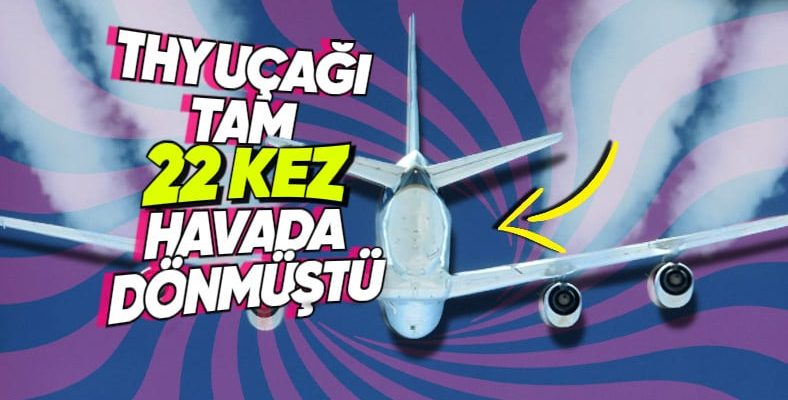Even though we don’t normally encounter this often, you have heard many times that planes have to make emergency landings. Maybe in a movie, maybe in real life. In such a situation, why do planes hover in the sky for minutes when they should be landing suddenly?
There can be many surprises that cause an airplane with a full tank to land early while in the air. The strangest of these reasons in 2020 was that one of the passengers fell ill.. In such situations, why might planes be circling repeatedly in the air when they should be making an emergency landing?
There is actually a very simple explanation for this: If you see a plane circling overhead, do not be afraid. He’s just trying to drain his fuel.
Before the planes take off, the flight planner calculates the required amount of fuel.
While the plane is cruising how much fuel the pilot will burn, how much the plane will weigh for a safe landing Information such as this is in the hands of the captain. However, fuel draining is a very rare occurrence. Because dropping aviation fuel, which is quite costly, from the air is the last option the pilot will consider.
Fuel injection systems can instantly discharge thousands of dollars worth of fuel per second. An aircraft can even return to desired maximum landing weight in 15 minutes or less. This process is as simple as pressing a button in the cockpit. However, not every aircraft has this practical feature. Airplanes without a fuel dump system consume fuel by circling on the safe route and altitude recommended by the tower.
This event won’t last long. Because planes can reach the desired weight in less than 15 minutes.
With just a simple instruction in the cockpit, the pilot can dump fuel through the system at the rear of the aircraft. Of course, this situation leaves a lot of questions in mind. For example “What if all the fuel goes out at once? Do not worry; Even if the pilot wants to throw all the fuel out immediately, the planes do not allow this to happen. ‘stop’ security It prevents with. This way, all the fuel doesn’t disappear at once.
Pilots alone cannot decide when and how to dump fuel. They also have a rule. For example If a plane is going to dump fuel, it must be approximately 600 meters above the highest obstacle on the route. And of course, it is important to stay away from crowded places and waterfronts as much as possible.
We should not forget air traffic controllers either. They also advise pilots on the most appropriate place to dump fuel.
Dumping fuel into the atmosphere is a type of “waste of money” It’s not a very common situation because it happens. Anyway, fuel draining usually takes place in emergency situations. However, according to research by British Airways, it is used by the aviation industry every year. Only 0.01% of the fuel appears to be disposed of.
If this figure still holds Approximately 2 million gallons (7,570,823.57 liters) by American airlines alone in 2018 means fuel is released into the atmosphere. The same studies argue that the discharged fuel must evaporate before falling to the ground. However, some claims that even if the fuel evaporates, it still remains suspended in the atmosphere. In other words, it is not yet clear whether he is healthy or not.
The THY plane, which took off from Atatürk Airport on October 13, 2017, circled in the air for 7 hours.
Shortly after takeoff, the plane decided to return to the airport because a passenger became ill. The plane, with 257 passengers, was forced to evacuate fuel. He toured the Marmara Sea for 7 hours. Since the plane’s route was Canada, the fuel that would last that distance had to be evacuated to ensure a safe landing. Landing took place after 7 hours; That’s how those images were reflected on the screens.
Since it is not yet certain that it is healthy, is there no alternative to draining the fuel?
In fact, it is possible to land a very heavy plane, but it is not recommended. Because if the pilot makes a heavy landing, he will really push the plane may cause sudden damage. Additionally, before landing a plane full of fuel, it is necessary to consider that the plane will burst into flames in the event of a possible fire or accident.
But the bottom line is, of course, passenger safety. So, if you ask whether it is dumping fuel or a dangerous landing, they are not much different from each other. Both have advantages and disadvantages. But in any case, the pilot’s job is to land the plane as quickly and safely as possible. If this requires a heavy landing then it will be an inevitable decision. After all, the most important thing, as we said, is to ensure the safety of passengers.
RELATED NEWS
One of the Most Sad Events in Aviation History: Passenger Planes Hit and Crashed by Rockets or Warplanes
RELATED NEWS
